Malariaverse Workshop Bed nets
Session 3 💪!
Session aims:
- Understand why bed nets can be challenging to model
- Overview of bed net metrics and model inputs
- Using 📦 [netz] to traverse the bed net landscape
- Implementing bed nets in 📦 [malariasimulation]
Why can bed nets be tricky?
- The effective coverage of bed nets today depends on the cumulative impacts of net distributions and net loss over many prior years.
Why can bed nets be tricky?
- There are lots of bed net metrics:
- Delivery to country
- Distribution within country
- Crop (total number of nets within a country)
- Access and usage
Why can bed nets be tricky?
- … and lots of other bed net variables to consider:
- Net type
- Net retention (or rate of loss)
- Distribution method/schedule (mass, routine etc.)
- Interaction with insecticide resistance
- And finally, how we implement bed nets in 📦 [malariasimulation]
An empirical model of bed nets
- Amelia Bertozzi-Villa et al have published a model linking bed net metrics for countries in SSA1.
- We can use this model to translate between the different bed net metrics
- The model includes country-level fits
An empirical model of bed nets
- The model triangulates net deliveries to a country with information on distributions and survey data on access and usage.
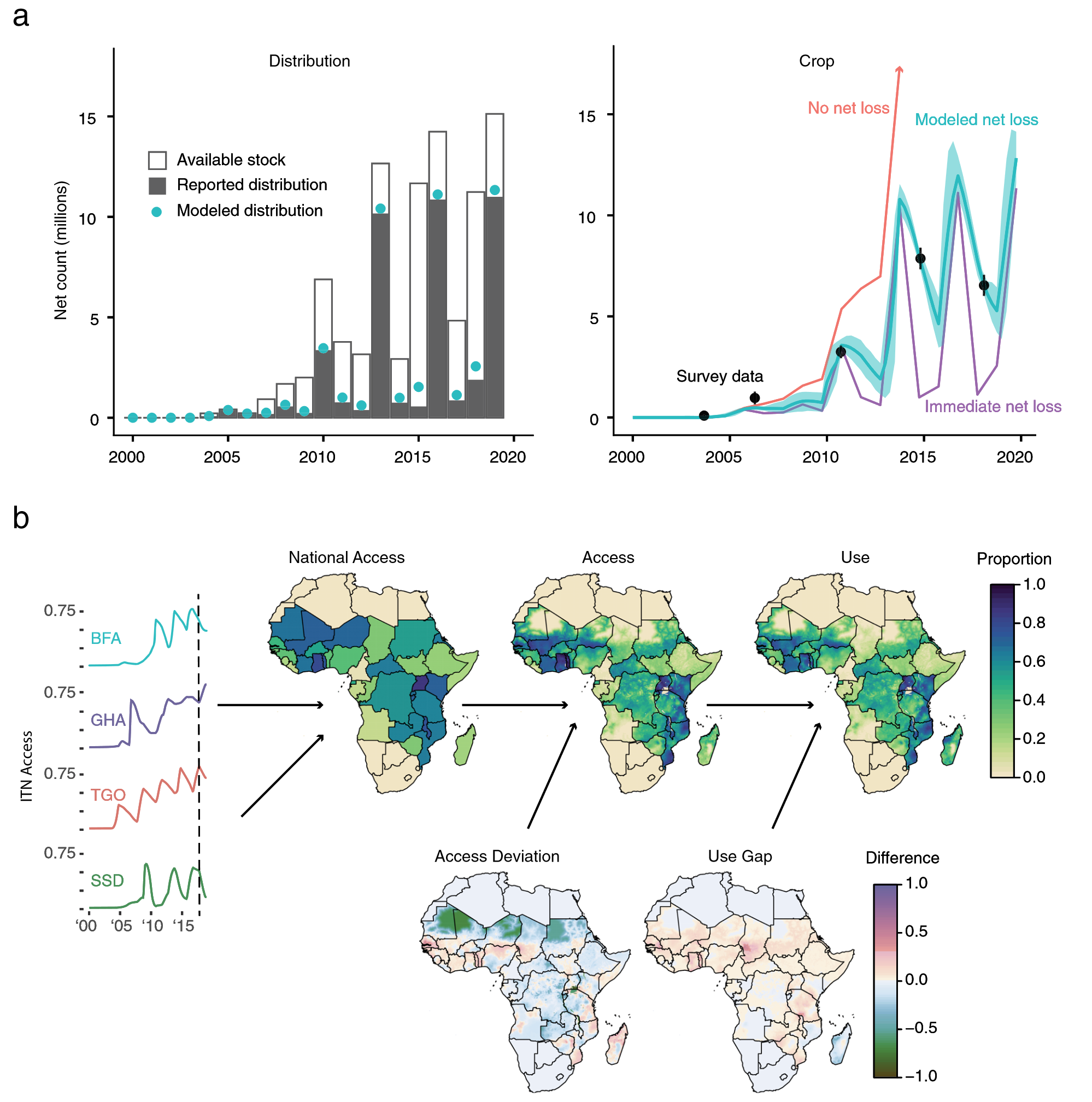
An empirical model of bed nets
- The model also estimates country-specific net retention times
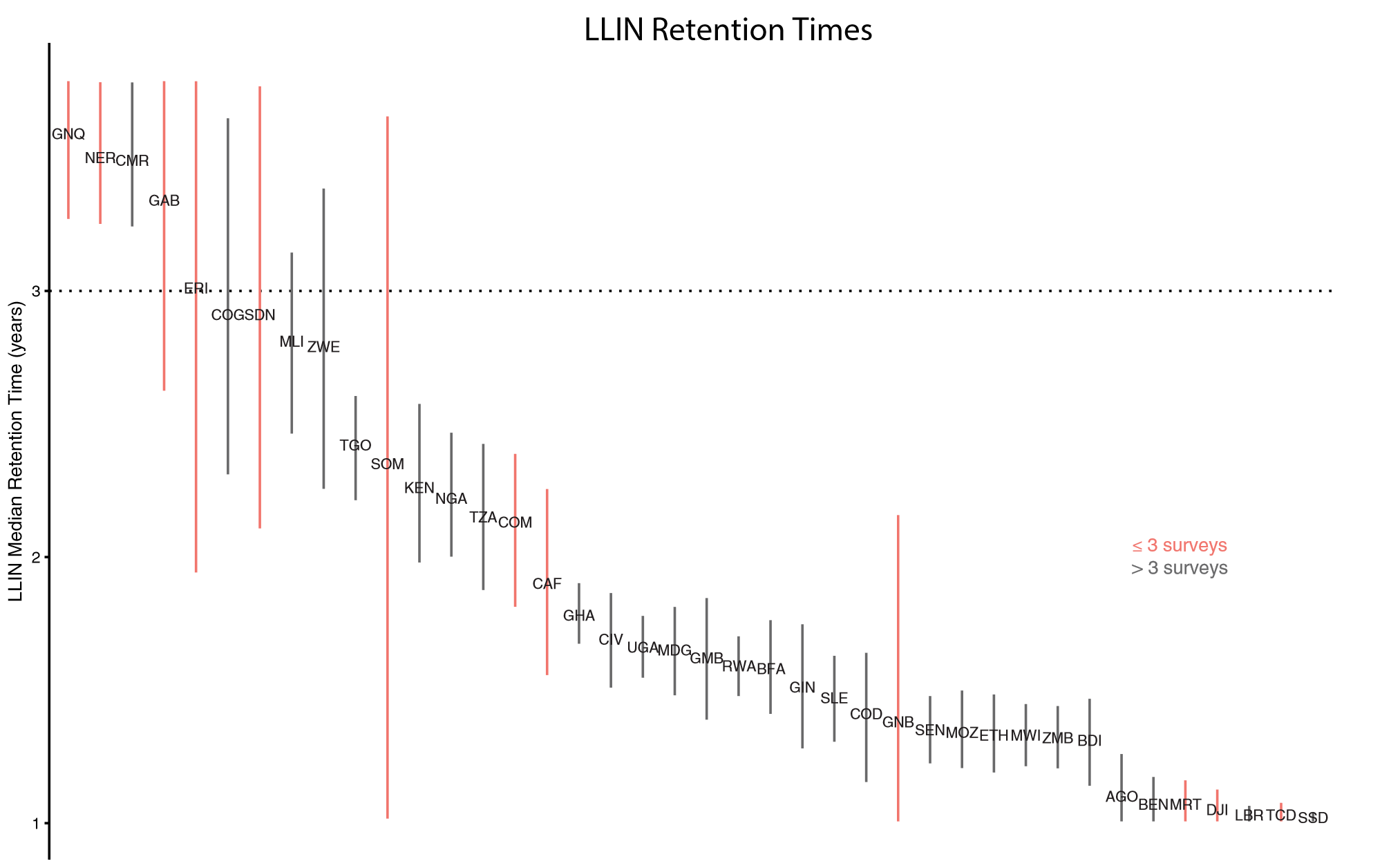
An empirical model of bed nets
- Bertozzi-Villa et al show that access and crop are not linearly related (at the country level).
- This can have big implications when costing a bet net campaign.
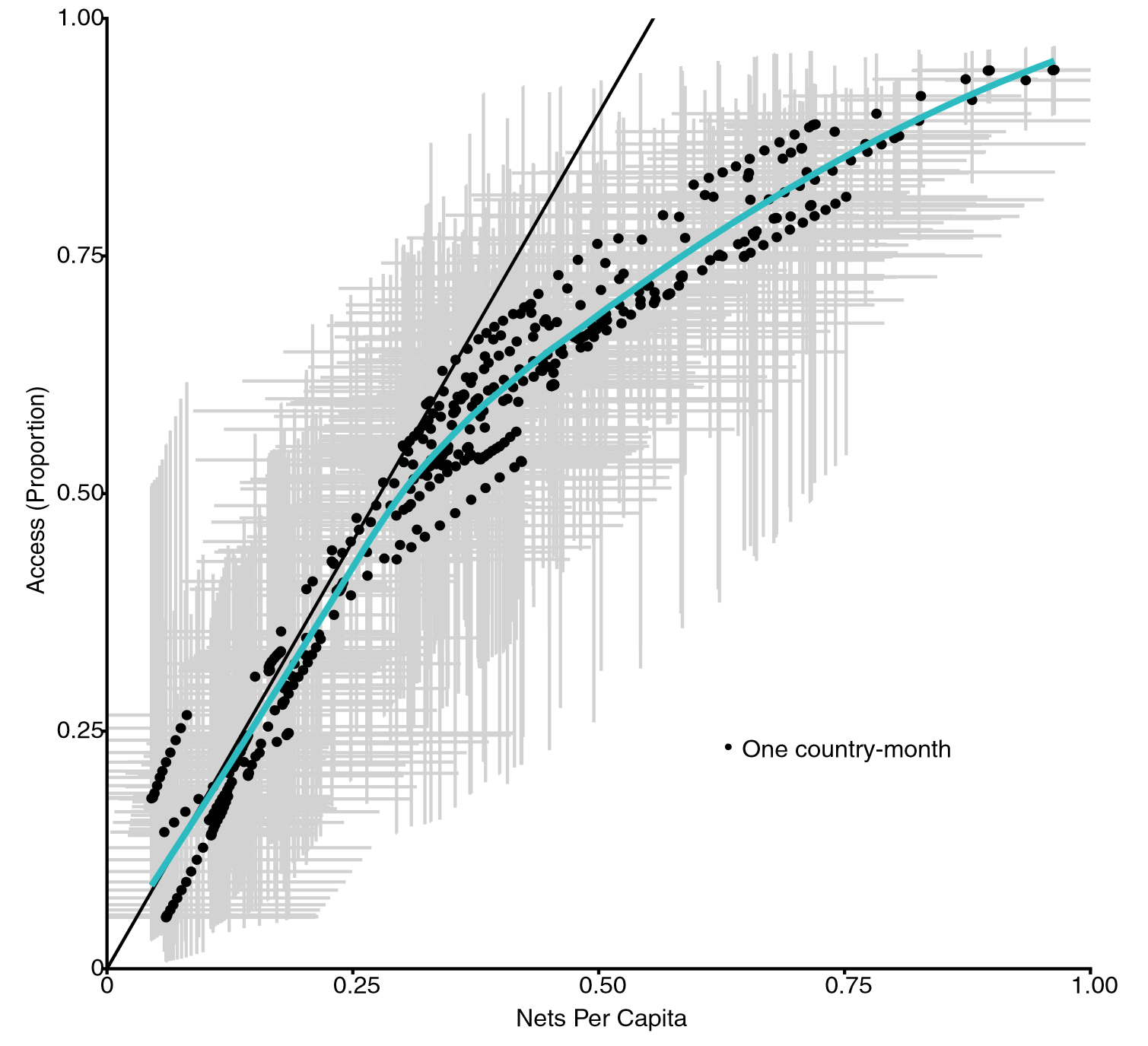
📦 [netz]
- The 📦 [netz] has translated some of the work by Bertozzi-Villa et al.
- It can facilitate translation between different bed net metrics.
- It can be used to access country-specific data.
- It also has functionality for specifying bed nets in 📦 [malariasimulation]
🙏 Big thank you to Nora for lots of hard work on 📦 [netz]!
Translating between bed net metrics with 📦 [netz]
Schematic overview

Usage and Access
Usage: the proportion of people who have slept under a bed net the previous night. This is effective coverage.
Access: the proportion of the population that could sleep under a net.
📦 [netz] has functions to convert between usage and access:
netz::usage_to_access(usage = 0.5, use_rate = 0.8)netz::access_to_usage(access = 0.5, use_rate = 0.8)
You can view empirical estimates of country use rates with:
netz::get_usage_rate_data()
Access and crop
Access: the proportion of the population that could sleep under a net.
Crop: the total number of nets in the population. Crop increases with net distributions and decreases as nets are worn out and thrown away over time.
📦 [netz] has functions to convert between access and crop:
netz::access_to_crop(access = 0.5)netz::crop_to_access(crop = 0.5)
Crop and distributions
Crop: the total number of nets in the population. Crop increases with net distributions and decreases as nets are worn out and thrown away over time.
Distribution: Nets distributed. These may be via mass-distributions or continuous distribution routes.
📦 [netz] has functions to convert between crop and distribution:
netz::crop_to_distribution(crop = 0.5, distribution_frequency = 3 * 365, half_life = 2 * 365)netz::distribution_to_crop(crop = 0.5, distribution_frequency = 3 * 365, half_life = 2 * 365)
Net retention half-lives are estimated in the model by Bertozzi-Villa et al and can be accessed with:
netz::get_halflife_data()
Crop and distributions
As crop is the cumulative impact of past distributions, different combinations of past distributions may lead to similar crop estimates. We can dynamically translate between no-equilibrium crop and distributions with:
netz::crop_to_distribution_dynamic(crop = c(0.1, 0.2, 0.5, 0.1), netz::net_loss_map)netz::distribution_to_crop_dynamic(distribution = c(0.1, 0.2, 0.5, 0.1), netz::net_loss_map)
Net loss functions
Net retention can be modelled with different function forms.
In the model by Bertozzi-Villa et al, they use an s-shaped function form.
In 📦 [malariasimulation] net retention is exponentially distributed.
These are modelled by:
netz::net_loss_map()andnetz::net_loss_exp()
These functions can be passed when the argument
net_loss_functionis required.We may to try and harmonise the bed net models at some point.
Bed nets in 📦 [malariasimulation]
Schematic overview

Implementing bed nets
- In 📦 [malariasimulation] distributions in the model lead directly to effective coverage or usage.
- We can use the 📦 [netz]
population_usage()function to view the bed net usage in the model resulting from a given set of bed net distributions (model inputs):
Implementing bed nets
- Resulting population usage:
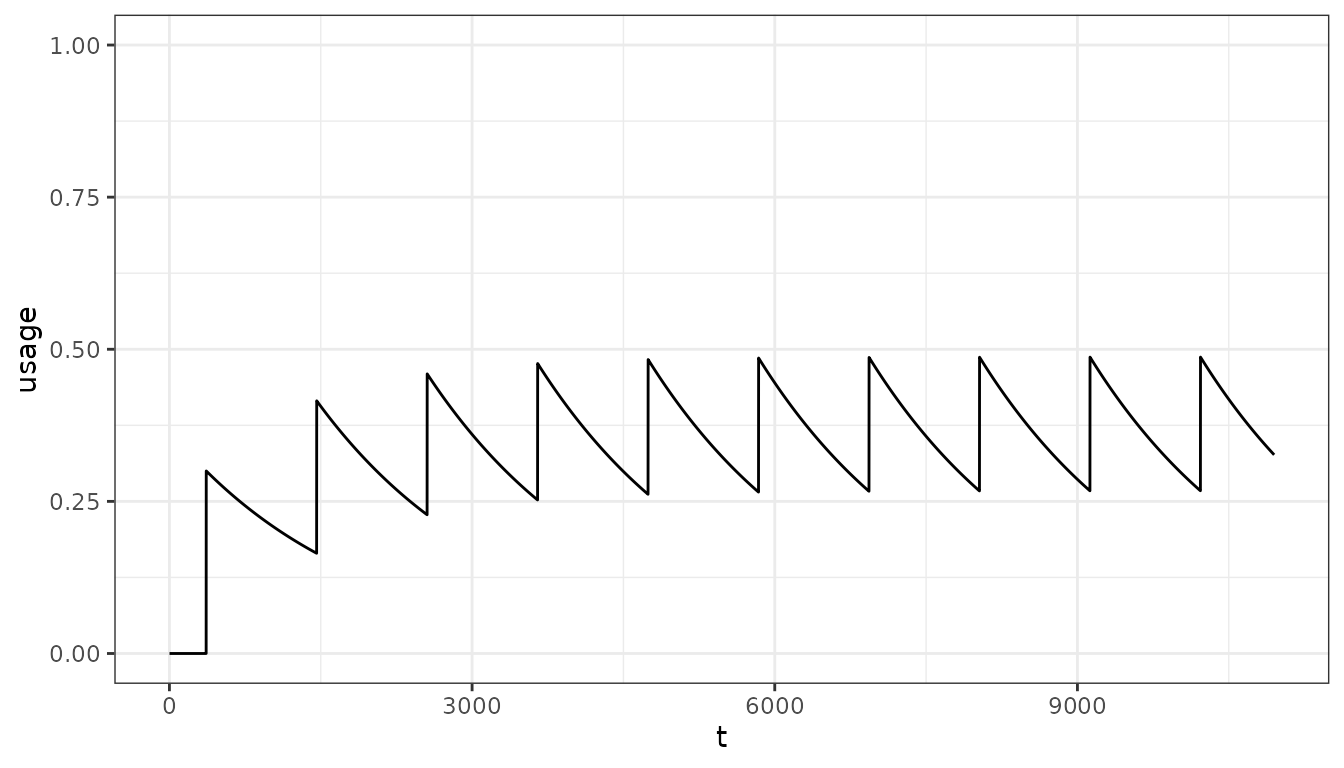
Implementing bed nets
- More frequent distribution will lead to net usage to build to higher levels:
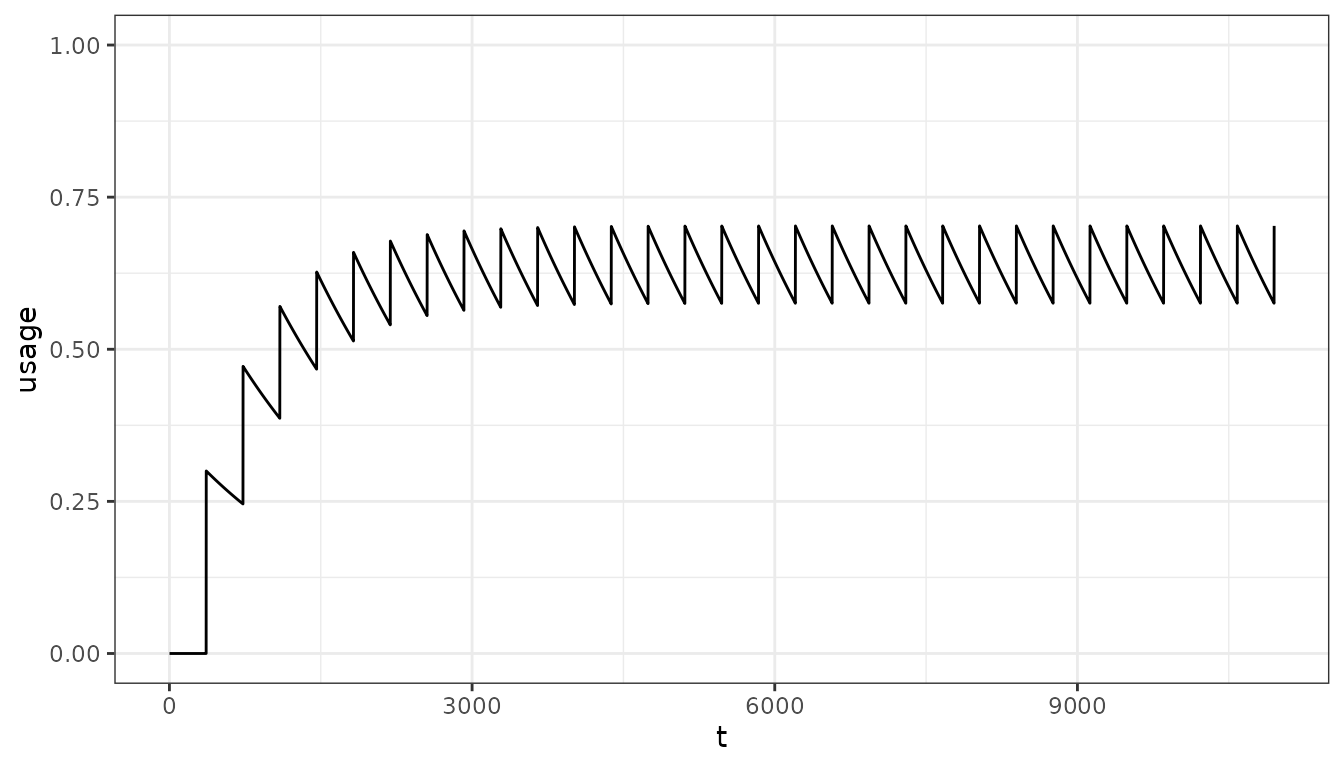
Implementing bed nets
- As will larger distributions:
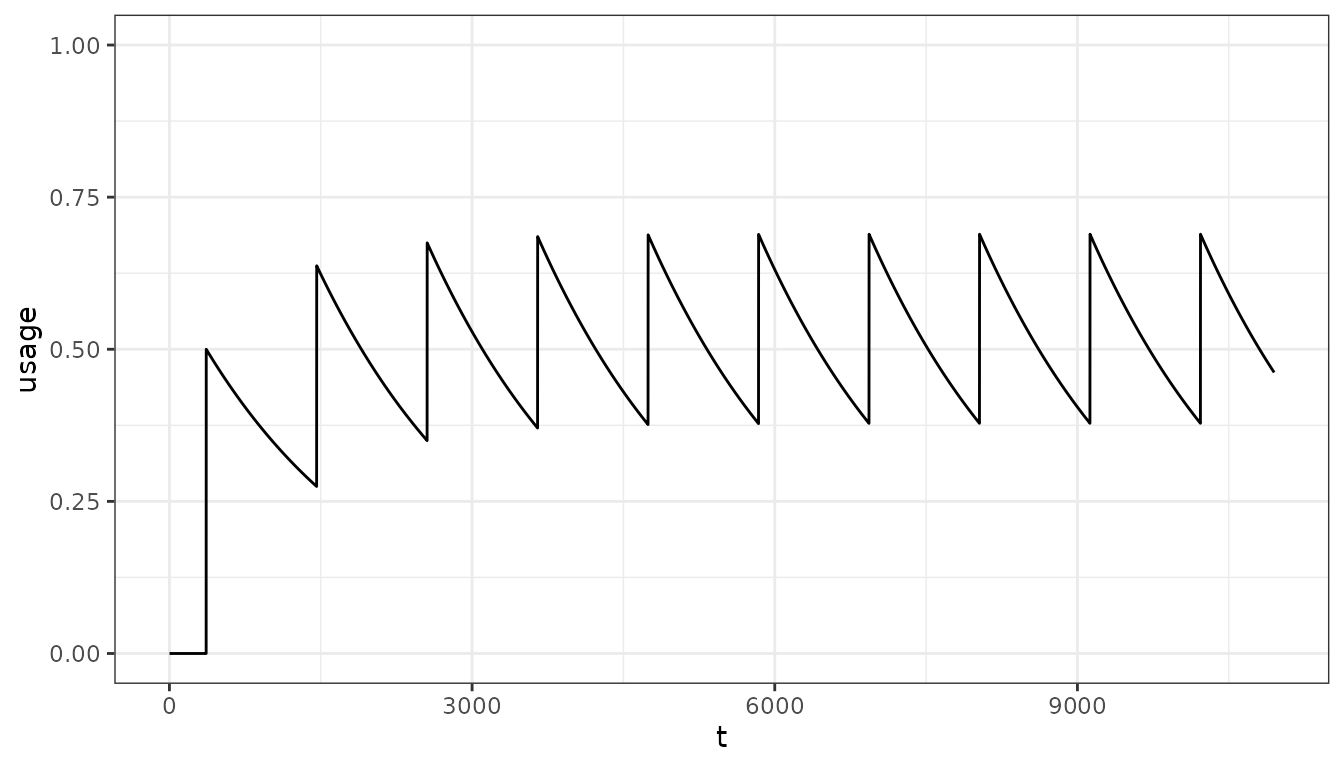
Implementing bed nets
- We can also model irregular distributions:
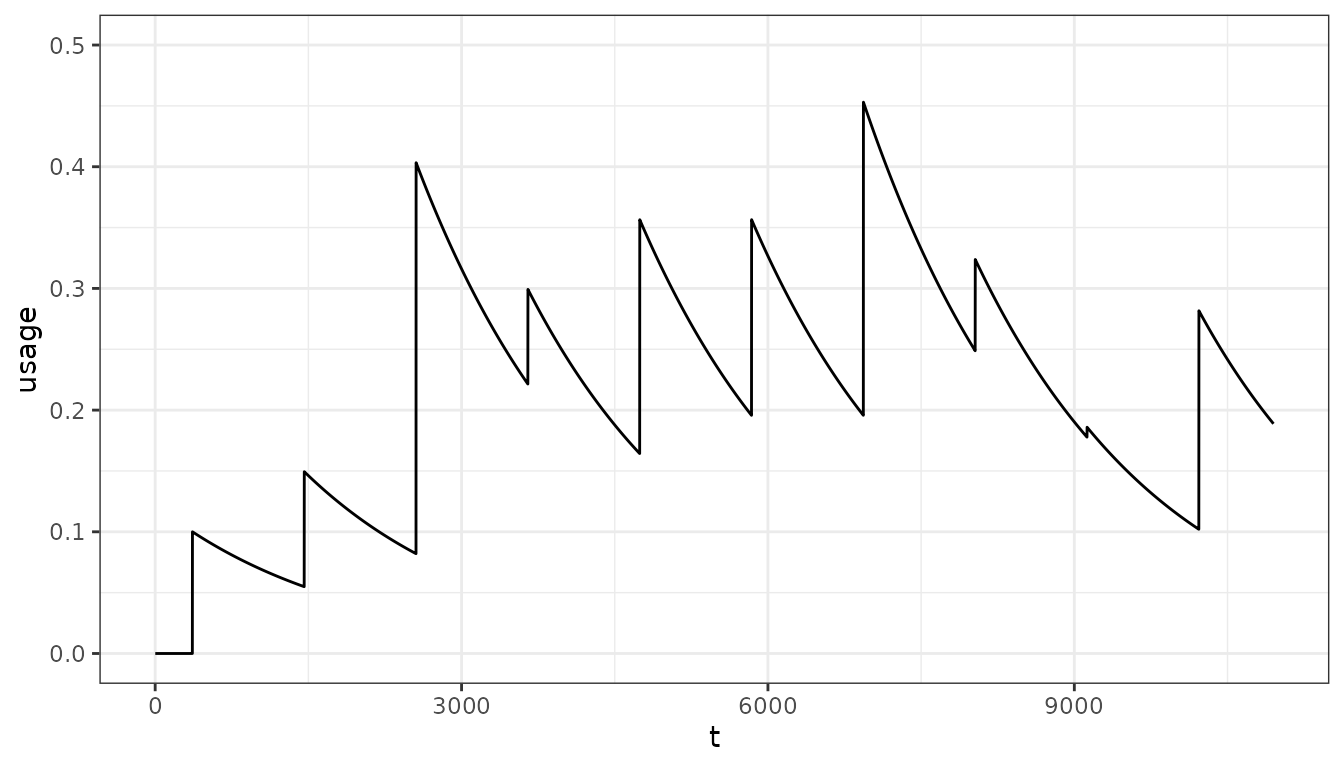
Fitting bed nets
- In many cases we might have a set of observed population level usage estimates that we want to match to. We can use a non-linear optimiser to fit the distribution to these target usages:
# Target usage associated time points
target <- c(0.45, 0.33, 0.7)
target_tt <- c(2, 5, 9) * 365
# Time points at which distribution will occur
distribution_tt <- c(1, 4, 8) * 365
# Fit
fit <- netz::fit_usage(
target_usage = target,
target_usage_timesteps = target_tt,
distribution_timesteps = distribution_tt
)Fitting bed nets
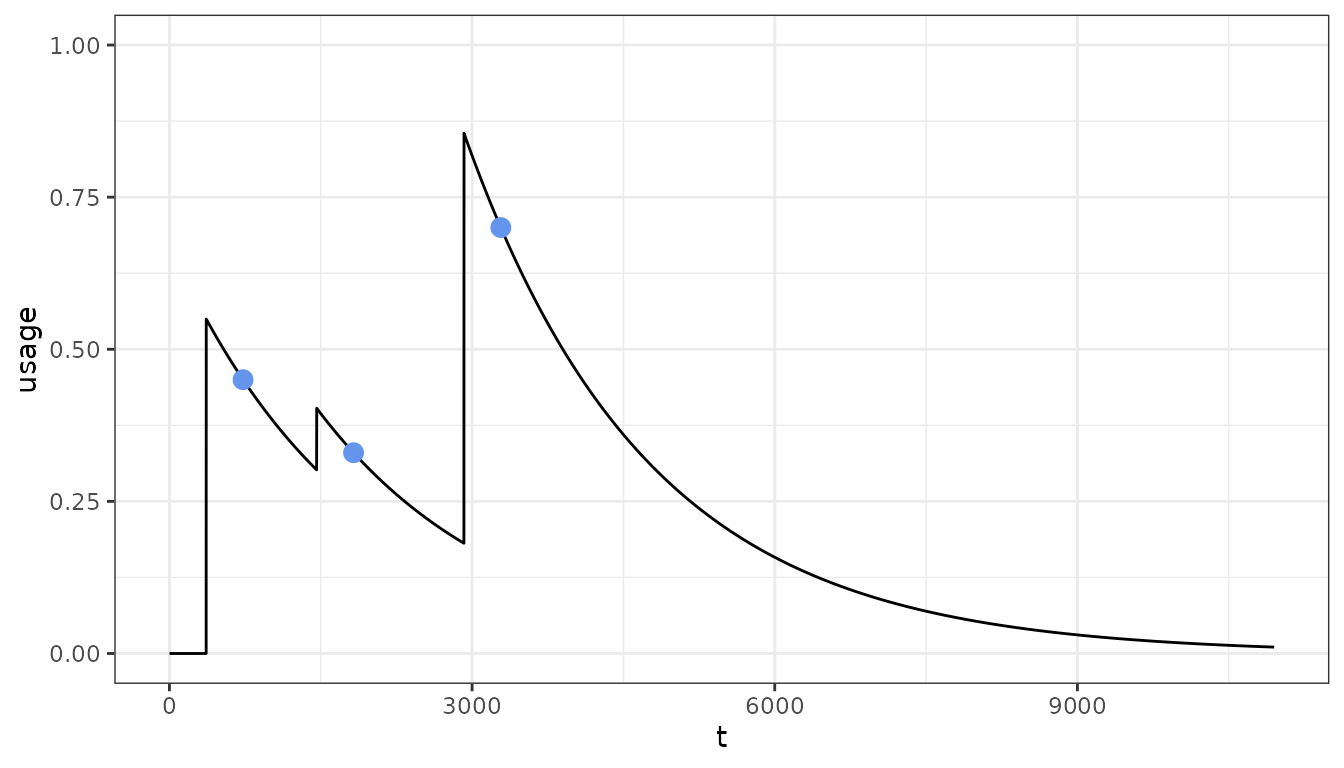
😵 Conversion overload! 😵
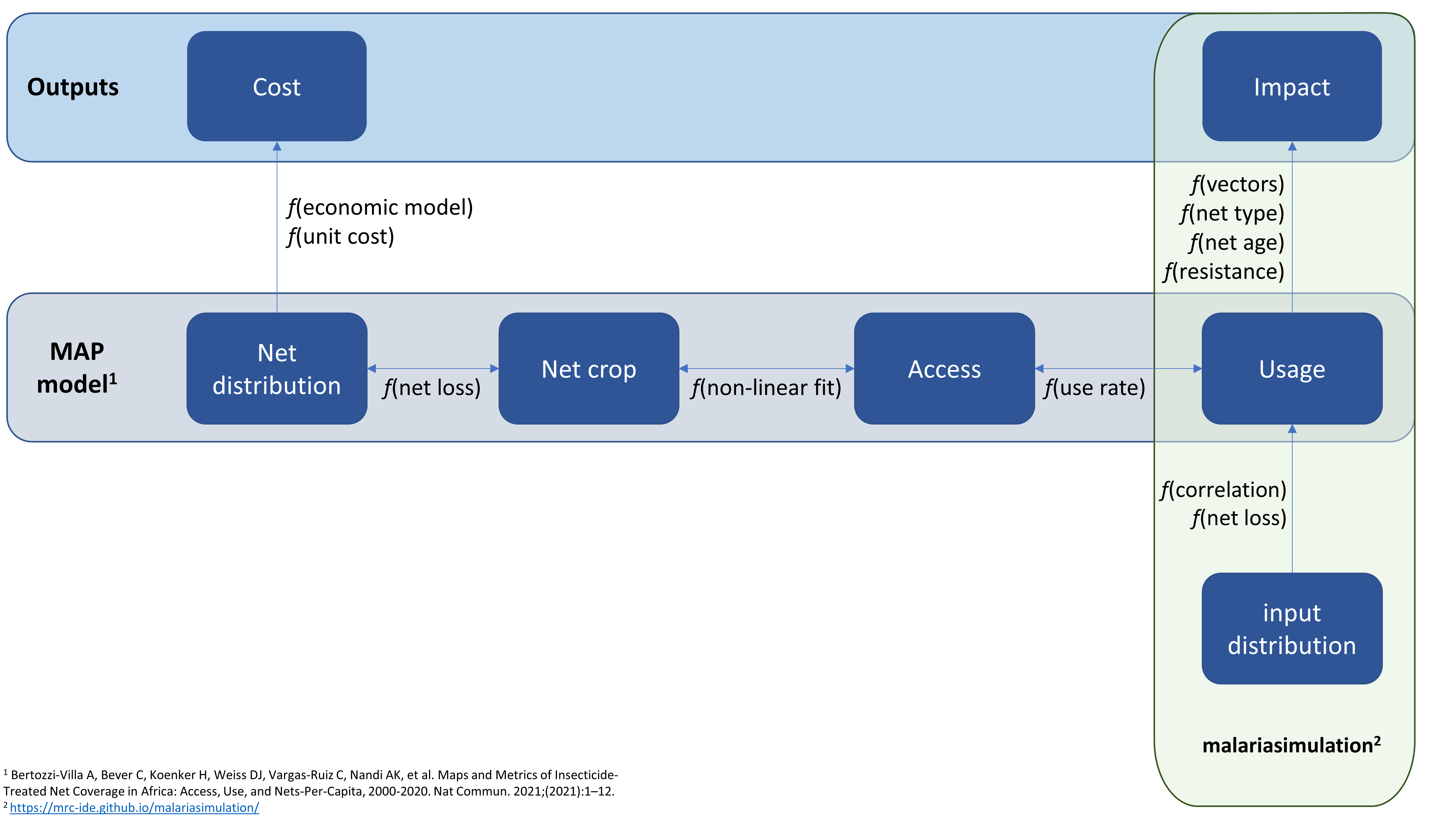
Bed nets in site files
- We can look at the bed net inputs in the
$interventionssection of a site file. - You can see that as well as usage, we have the model input, net type, level of insecticide resistance and associated net efficacy parameters.
head(
foresite::TGO$interventions[, c("iso3c", "name_1", "urban_rural", "year",
"itn_use", "itn_input_dist", "net_type",
"pyrethroid_resistance",
"dn0", "rn0", "rnm", "gamman")]
) iso3c name_1 urban_rural year itn_use itn_input_dist net_type
1 TGO Centre rural 2000 0.04239319 3.972372e-02 pyrethroid_only
2 TGO Centre rural 2001 0.03059912 1.999607e-03 pyrethroid_only
3 TGO Centre rural 2002 0.02194407 1.225237e-05 pyrethroid_only
4 TGO Centre rural 2003 0.02110716 3.579113e-03 pyrethroid_only
5 TGO Centre rural 2004 0.14395837 1.402791e-01 pyrethroid_only
6 TGO Centre rural 2005 0.20412837 9.050257e-02 pyrethroid_only
pyrethroid_resistance dn0 rn0 rnm gamman
1 0.46 0.2933696 0.6736694 0.24 2.346871
2 0.48 0.2899376 0.6761727 0.24 2.331779
3 0.50 0.2869886 0.6783065 0.24 2.317303
4 0.53 0.2826286 0.6814312 0.24 2.294338
5 0.55 0.2792447 0.6838313 0.24 2.278917
6 0.57 0.2763609 0.6858590 0.24 2.262831Bed nets in site files
All of these bed net elements get translated into 📦 [malariasimulation] parameters when using the 📦 [site]
site_parameters()function.We also include future resistance extrapolations in the
$resistancepart of the site file.
🙏 No time today to explore all of the amazing work on insecticide resistance and net efficacy, but huge thanks to Tom, Ellie and others for all the hard work!

Let’s give it a try!
- Run
mvw::run_tutorial("Bednet")

